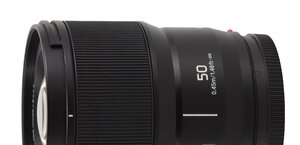Nikon Nikkor AF-S 70-200 mm f/4.0G ED VR
4. Image resolution
Let’s check at first how the lens presents itself in the frame centre. The MTF50 values it got at 70, 135 and 200 mm and particular aperture values are presented on the graph below.

Please Support UsIf you enjoy our reviews and articles, and you want us to continue our work please, support our website by donating through PayPal. The funds are going to be used for paying our editorial team, renting servers, and equipping our testing studio; only that way we will be able to continue providing you interesting content for free. |
- - - - - - - - - - - - - - - - - - - - - - - - - - - - - - - - - - - - - - - - - - - - - - - -
When it comes to the performance in the 70-135 mm focal range it is practically close to perfect – of course taking into account the fact that we deal here with a zoom lens. First of all the tested Nikkor fares very evenly here – at every aperture the results, within the margin of error, are the same. Already at the maximum relative aperture we get MTFs near 43-44 lpmm and on stopping down they increase to almost 45 lpmm. Here the performance of the tested device doesn’t differ almost at all from that of its faster brother so the Nikkor AF-S 70–200 mm f/2.8G ED VR II.
The situation is a bit worse at the maximum focal length but still there are no reasons to complain. At the maximum relative aperture the lens reaches the value of 35 lpmm which is safely above the decency level; on stopping down it gets to a very good level of about 42 lpmm. Spherical aberration is responsible for a weaker performance at 200 mm – we will describe it in more detail in the next chapter.
Exactly that maximum focal length is what makes the 70-200 mm f/4.0 model differ from the more expensive f/2.8 one. If you care not only about the faster f/2.8 aperture but also the brilliant performance at 200 mm and by f/4.0-f/5.6 you should definitely choose the more expensive and the faster Nikkor.
It is also worth mentioning that the new Nikkor 70–200 mm f/4.0 VR seems to be a sharper device than the Canon EF 70-200 mm f/4L IS USM, presented several years ago. Still the direct comparison would be difficult because our Canon tests were conducted on different platforms and the Canon’s performance was completely different than that of the Nikkor anyway – the shortest focal length fared the worst and the best results it managed to get at 200 mm.
Let’s check how the tested lens fares on the edge of the APS-C/DX sensor, The appropriate graph is situated below.

It is of course not a surprise that the results are lower than in the frame centre. The good news is that results still can be described as good or even very good and even at the maximum relative aperture the decency level is reached, sometimes significantly exceeded. The same thing couldn’t be told about the Canon 70-200 mm f/4.0 IS which experienced a pronounced crisis at 70 mm and by f/4.0.
When you compare the tested lens to the Nikkor 70-200 mm f/2.8 VR II you can see that the more expensive and faster model fares better at every focal length. After stopping down it can reach and even slightly exceed the level of 40 lpmm which the f/4.0 aperture Nikkor didn’t manage at all.
Let’s pass to the description of the performance on the edge of the full frame sensor. The graph below will make it easier.

Not such a good situation here – the lens fares the worst at 200 mm very consistently and in that case applying the maximum relative aperture makes the image not especially useful. At shorter focal lengths the decency level is met – but nothing more. The best performance can be observed near f/8.0 where all focal lengths reach a result near 34 lpmm.
Once again if you demand a better image quality you should get interested in the f/2.8 model which, on the edge of full frame sensor, could exceed a level of 36 lpmm and by f/4.0 and at all focal lengths it provided fully useful images.
At the end of the chapter we present crops of our testing chart photos, taken from the frame centre and saved as JPEG files along with RAW files which were used to create the graphs above.
 |






